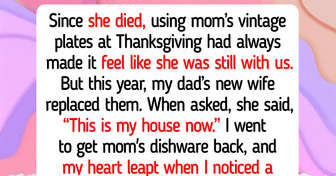18 Types of People We’re Better Off Keeping Our Distance From

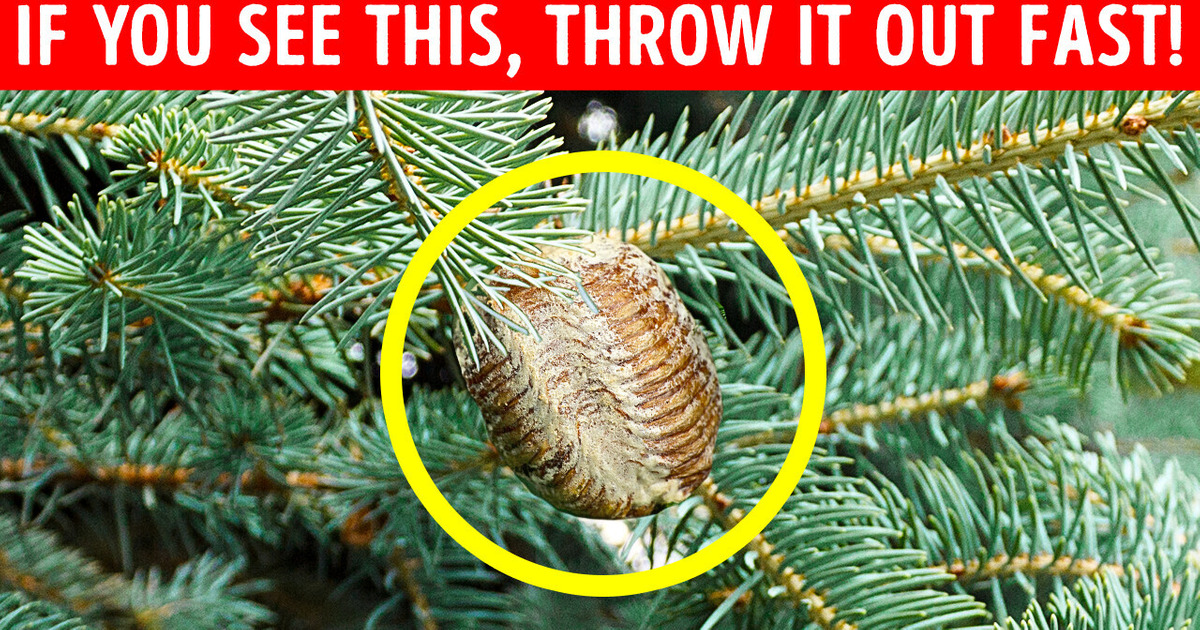
A weird white spot on a banana is a sure sign you probably wanna throw them away as these are the nests of spiders. I’m talking about the Brazilian wandering spider, as it has no GPS. And this guy is dangerous, also known as the world’s most venomous spider. One bite and your nervous system is instantly blocked — as a nasty bonus you get nausea and blurred vision.
Don’t worry, they’re most likely to be found in South America, but since they like to hide, they can sneak into the banana box and travel wherever the bananas travel. They like to travel in their sack and there is evidence of a mama spider traveling together with her baby spiders. Oh, goody!
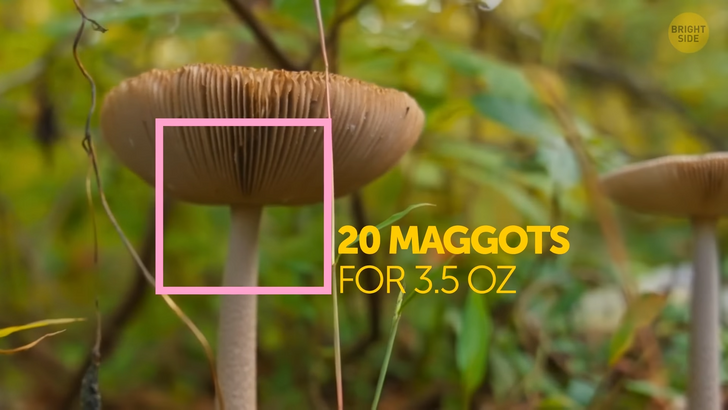
Ever eaten canned food? Chances are, you’ve hoovered up some maggots too. Those critters can be found in all types of foods: canned tomatoes? Sure thing. Canned mushrooms? Absolutely, maggots are crazy about those! They love it so much that 20 maggots are good to go for 3.5 oz of drained mushrooms. Sorry pal, there’s nothing we can do, just accept it.
Some creepy things in your food may actually be... approved by the FDA. As weird as it may sound, the FDA is ok with 30 or more insect parts per chocolate bar. Wanna know more? Ok. How about rodent hair in your peanut butter? Yummy! Despite the fact that PB is one of the best controlled by FDA products out there, they don’t see anything bad in a couple of rodent hairs per jar. Now let’s check your intuition!
Question one: how much mold is acceptable in apple butter according to the FDA?
Not that much, actually — 12 % mold is acceptable.
Question two: how much mold is okay for cherry jam?
Things are getting stinkier, as 30% mold is ok for cherry jam.
The last one — what about blackcurrant jam?
Ready! 75% moldy blackcurrant jam is FDA-approved. Ahem, I don’t think I’m gonna eat PB with blackcurrant jam ever again...

Broccoli is both good for health and risky at the same time. It’s not that you shouldn’t touch broccoli, but it’s rather a friendly reminder to check your veggies. What if there might be a dangerous insect lurking inside your broccoli? Let’s say, the black widow spider? Their bite is not as bad as the Brazilian wandering spider’s bite, but it’s still not good.
It’s a true story: a guy from Ohio did find such a spider in broccoli. Luckily, this story has a happy ending — the person who found it called the local animal sanctuary, and the Ohio Another Chance Sanctuary adopted the spider and gave it a really cute name — Broccoli. Wait a minute! We’re adopting spiders now?
Ho-ho-ho! Christmas is soon, and you opt for a live Christmas tree? Before dragging that tree right to your place, you’d better inspect it thoroughly! See that walnut-sized, pine cone-shaped object hanging on your tree?
Bad news: this is someone’s dormitory. It’s an egg sac holding hundreds of little mantises waiting to hatch in your home and celebrate the holidays together. Unless you wanna share your bed with them, make sure all the surprises are UNDER the Christmas tree, not on it.

Right, you don’t wanna risk and opt for the fake Christmas tree. Good choice! The thing is, fake trees are three times less likely to catch fire than live ones. But it doesn’t mean it’s totally safe. You have to be careful either way, use appropriate lighting, and never place the fake tree too close to the heat source. Flame-resistant models are the best!
Near-sighted people, beware! If you ever see something that looks either like an Oreo cookie or an ancient coin with a quaint design, you better put on your glasses before touching it. You know, this might be a... terrifying spider. What — AGAIN? Yeah. I’m talking about The Chinese Hourglass Spider — and I honestly got no idea why they call it “the hourglass spider” and not “the cookie spider”.
These guys live in Southeast Asia, Mexico, and Guatemala, and seems like it doesn’t really care that much about the cold since it can even chill in some parts of the United States and Canada. These spiders are notorious for setting up traps. They build burrows and once they detect motion — bam! — they pounce. Also, those burrows help them keep unwelcome visitors, such as wasps, at bay. Good news! We, humans, are way too large for them to drag us into their dungeons, and, despite many viral posts, they’re not poisonous to us! Whew!
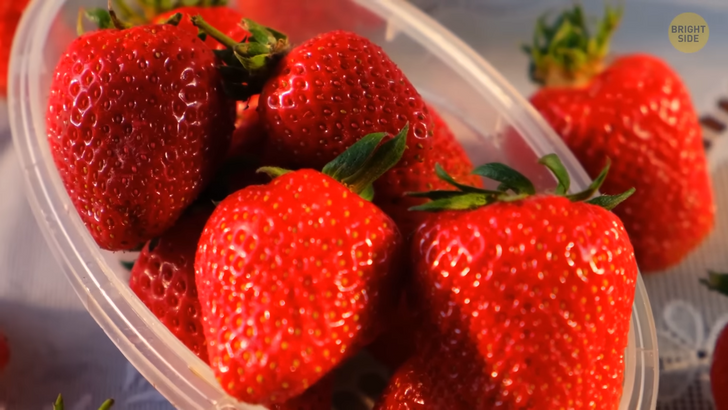
What time is it? Ah, it’s time to debunk another myth! Some time ago, there was a viral TikTok video with strawberries soaked in salt water. The video looked pretty gross because of worm-like bugs crawling from the strawberry. But this one is sorta a myth that all the strawberries are swarming with larvae.
First off, they all get checked and soaked before shipping. Moreover, there are fruit flies, which are quite different. The thing is, if the berries wait on the counter to be bought for too long, they start attracting fruit flies, which lay teeny-tiny eggs, which then turn into larvae, which then turn into new fruit flies. The key point here is that these fruit flies are everywhere — supermarkets, smaller stores, and even your kitchen.
And yeah, you’re very much likely to eat them each time you munch on pretty much any berries. You say gross, I say natural protein! Just kidding. Don’t worry, plant larvae aren’t dangerous for people. Also, you don’t need to soak your berries in salt water — a thorough rinse will do.
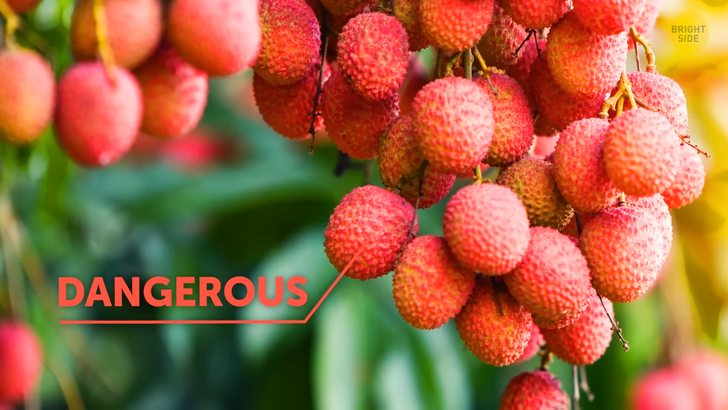
It’s best to avoid some foods if they’re underripe. Lychee is a good example here. Despite their innocent appearance, they can be pretty dangerous. If you eat them before they’re ripe, you’re likely to consume some toxins too. It’s not as bad as you can imagine, but this toxin can significantly lower your blood sugar. For people with certain conditions, it may lead to unwanted consequences, including fever and even worse. So, nothing extraordinary here, just make sure your lychees are ripe!
You might think that black sooty spots on your apple are a true sign the fruit isn’t edible, but it’s not quite true. First off, those sooty spots are nothing but a cosmetic issue, even though it’s a fungus. Don’t worry, it’s not dangerous or something. Option 1: scrub those spots off and munch on your apple. Option 2: peel the apple and munch on it. Option 3: where you throw the apple away doesn’t exist.
Beware if the salmon you’re about to buy has caviar — it might be a sign this fish is not gonna be as yummy as you want. Salmon from the Pacific Ocean tend to lay eggs in freshwater, so they have to migrate when they do that. But once the salmon is in fresh water, all its systems kinda stop working and the fish stops eating. Such salmon is still edible, but the quality is way poorer than it could be.
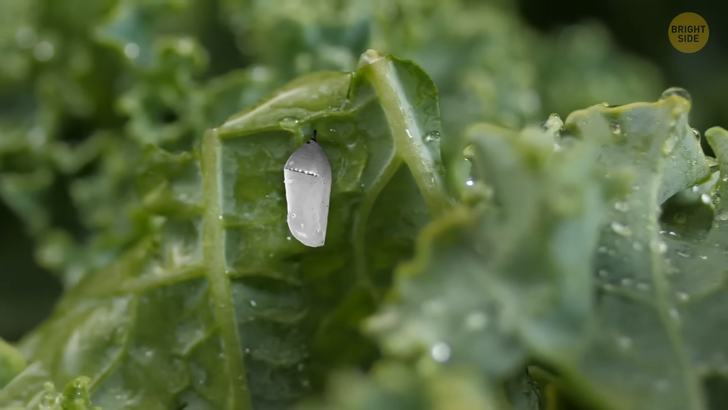
And what if you see a white capsule on your kale, which is supposedly a cocoon? Hey, no need to throw your dinner away! You can simply remove this aspiring butterfly (or fly), give that kale a fine rinse, and enjoy your salad! Oh, almost forgot: be careful with pre-packaged salads! Even though the manufacturers claim they’re safe to eat without washing, there is evidence of people getting health conditions because of unwashed pre-packaged salads. Those salads landed them with hefty medicine bills to get rid of the consequences.
Imagine you suddenly notice a fly in your drink. Is it doing the backstroke? Will you finish the glass or pour another one? Welp, it depends on the gender of the fly. If you got a female fly in your drink, a couple of minutes later the taste will get funky. If a male fly wants to take a bath in your glass, it won’t ruin the drink.
The thing is, the female flies have certain pheromones that are in charge of that funky smell. Even if you fish the fly out instantly, the drink can still lose its original taste, as even 1 nanogram of pheromone is enough. But since you probably won’t be able to tell the fly’s gender, you probably wanna pour a new glass. Yeah, a fly in your stomach won’t do anything bad to you, but it’s...sorta gross.


